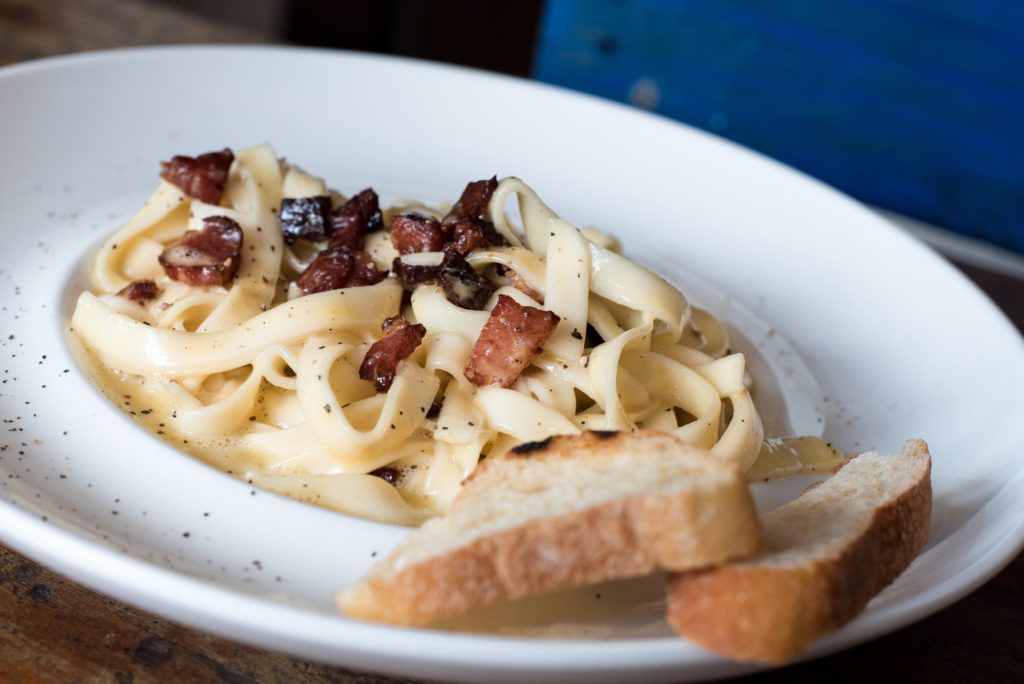People visiting Tuscany are often disappointed in the breads served. “I love Italian food, but the bread was so bland.”
Americans are used to being served a basket of bread, often with butter, oil or other accompaniments. We consider bread in America a first course in any sit-down restaurant. It keeps you busy while you wait for main courses and maybe fills you up a little with economical foodstuff (from the restauranteur’s perspective) so the main courses don’t appear so small.
Americans accustomed to the unlimited bread-sticks they find at Olive Garden, expect the same when abroad.
However, Italy is a country where the bread isn’t a course. It’s a utensil.
The function of the bread utensil is to scoop up the delicious little bits and extra sauce on the bottom of your plate.Italians refer to this as “la scarpetta” – “the little shoe”.
A utensil shouldn’t distract from the flavor of all that yummy goodness. They make Tuscan bread without salt, nor olive oil. There’s some question as to why. Some believe that warring factions cut off supplies. Others attribute it high taxes on salt. Still others think that with the utilitarian nature of the bread – and with the use of cured meats that were already salty, the people of Tuscany didn’t want the bread competing for attention on the palate.
Eatalianos love their bread. It compliments the eating experience with functionality.


Isn’t it strange then that bread in Lucca Province contains salt? The bread we get in our village shop is salted, maybe not as much as in the US, but it’s definitely one of the ingredients. In fact, the saltless bread is found to the south of Lucca. For sure in Altopascio and Florence. I can’t remember now whether the bread I’ve had elsewhere in Tuscany contained salt or not. As I recall, bread in Arezzo Province does. Lucca didn’t become part of the Duchy of Tuscany until 1847. Before that they were free to add salt or not. Maybe that’s why we have a different custom.